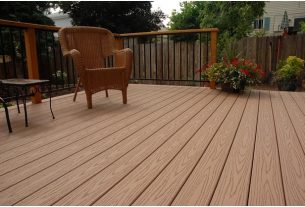People who take out old floor coverings in order to uncover a hardwood floor original have discovered a valuable asset that will enhance the home’s aesthetic appeal and increase its resale values. It is a good idea to think about how to restore your floor to its original beauty if you are in this fortunate situation.
People with little or no carpentry experience may be intimidated by the idea of restoring the floor. They may prefer to seek out local flooring stores which have professionals to help restore the floor and provide specialist guidance.
If you’re interested in hardwood floor refinishing, then keep reading.
How to do it right
Each step should be completed in the required time. Do not try to do it all in one weekend. Floor restorers who have experience understand the importance of proper preparation. They also know that high-quality results require a lot of time. This means not skipping on the work and making sure each step is completed before moving on to the next.
First, remove all floor coverings and movable fixtures, such as dado rails, dado boards, skirting boards, doors, etc. The more space you have, the better. As you work, ensure that you have continuous access to fresh air. This is an essential safety and health precaution.
After the room has been prepared, give it a thorough sweep using a stiff-bristled brush. Finally, vacuum. Check for broken or bent nails, splinters of wood, loose boards, and other damage, such as rot. Before moving on, remove all protrusions. Secure any loose floorboards.
Now the floor is ready for its first-round sanding. An industrial sander machine is the best option for sanding wood floors. You can easily walk on the boards. You can hire a belt or drum sander, and also get sandpaper discs at the rental outlet.
You should read the instructions and learn as much as you can about the machine before you start using it. If you’re unsure, don’t start sanding. An inexperienced industrial sander could cause irreparable damage to your boards by cutting in or bevelling.
If you feel confident using the sander, and the room has been properly prepared, you can now attach the sandpaper to it and turn it on. Next, you will need to walk the machine along the lengths of the planks to one side of the room. This machine will not reach the wall flush with the wall, so you’ll need to leave a gap of approximately 12 inches (30 1/2 cm). This area must be sanded manually with an orbital sander. Hand sanding is also a great way to get into tight corners or stairs.
You can sweep and vacuum the floor again after Floor Sanding to remove any remaining dust particles. You can use finer paper for the second sanding. A third sanding may need to be done depending on the original floor condition. When your floor has been sanded, it will appear lighter in color and feel smoother to the touch.
Once you’re satisfied with the sanding, you can apply your final product. There are many non-toxic floor finishes available, including wood stains, lacquers, and varnishes, as well as oil products. Follow all guidelines and ensure that there is always movement in the room. Two coats are applied and left to dry for 48 hours.
After floor sanding, you will need to install laminate flooring. First, select the top installer. Next, compare laminate flooring installer and choose the one that is best for you.




